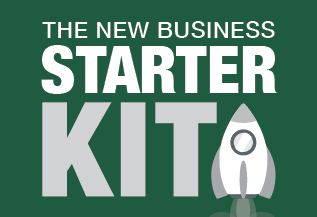Business Start Up Corner - What Is Your Cash Clock?
 If the latest statistics from the Australian Securities and Investments Commission (ASIC) are any indication, the business start-up environment is alive and well in this country. In fact, more than 200,000 companies were incorporated in 2014 and the World Bank ‘Doing Business’ Study ranked Australia the fourth easiest place in the world to start a business.
If the latest statistics from the Australian Securities and Investments Commission (ASIC) are any indication, the business start-up environment is alive and well in this country. In fact, more than 200,000 companies were incorporated in 2014 and the World Bank ‘Doing Business’ Study ranked Australia the fourth easiest place in the world to start a business.
Of course, satisfying the regulations is only part of the start-up process and a lot of planning is required before you actually flick the switch and establish your business structure, apply for a bank account, ABN and tax file number.
The process starts by identifying an opportunity and then developing a product or service that fits the gap in the market. It needs to be priced to capture a share of the market and the planning stage is a bit like a jig saw that you need to piece together. There are many moving pieces in the puzzle that need to be joined together when launching a start-up and one of those pieces is what we describe as your ‘cash clock’. This is the amount of time a business can survive (without a sale) before it runs out of cash. Having this information before starting your business is more important than many entrepreneurs think.
Your ‘cash clock’ is calculated by dividing the amount of cash in the bank by your current monthly spend. For example, if you have a bank balance of $20k and the current monthly expenses (staff, rent etc.) are $10k, then you have two months on the clock.
For start-ups, predicting and monitoring the financial performance of your business can seem a daunting task, however, knowing your numbers is crucial to the survival and ultimate success of your business. By starting with good financial habits you will know how to identify the warning signs. Early detection means you can then apply for finance before it becomes a crisis.
 Here are three tips to help you understand and monitor your start-up’s cash clock:
Here are three tips to help you understand and monitor your start-up’s cash clock:
- Create a budget. Detail your monthly expenditure starting with fixed costs like your rent. Measure your actual expenditure against the budgeted expenses and adjust your forward projection.
- Review your monthly profit/loss report. Compare the figures against your budget and identify the variances.
- Create a cash flow budget. Start with your opening bank balance then add inflows then deduct outflows to project your closing monthly bank balance. Remember to include unpaid liabilities such as credit cards and tax liabilities.
In business, knowledge is power and knowing how much time you have on your ‘cash clock’ lets you plan and avoid a cash flow crisis. As business start-up specialists we can help you navigate your way through the business start-up maze. We have built templates to help you create cash flow budgets and we can also assist you with some financial modelling so you can see the financial implications of changes in prices and costs.
Contact us today and let’s see if your business idea makes sound financial sense.
Click HERE to download the full edition of The Business Accelerator Magazine for March 2015.
Other articles in this edition:
- The 7 Website Essentials
- How Does Your Website Rank?
- Accounting Software - Another Brick In Your Business Wall
- Book Corner - Good To Great
- Marketing Corner - Email Marketing That Works
- Tech Corner - Voicemail For Your Website & Customised Email Signatures
- Self Managed Super Funds - Property Investments Yes or No?
- Life Insurance Within Your Supperannuation Fund








